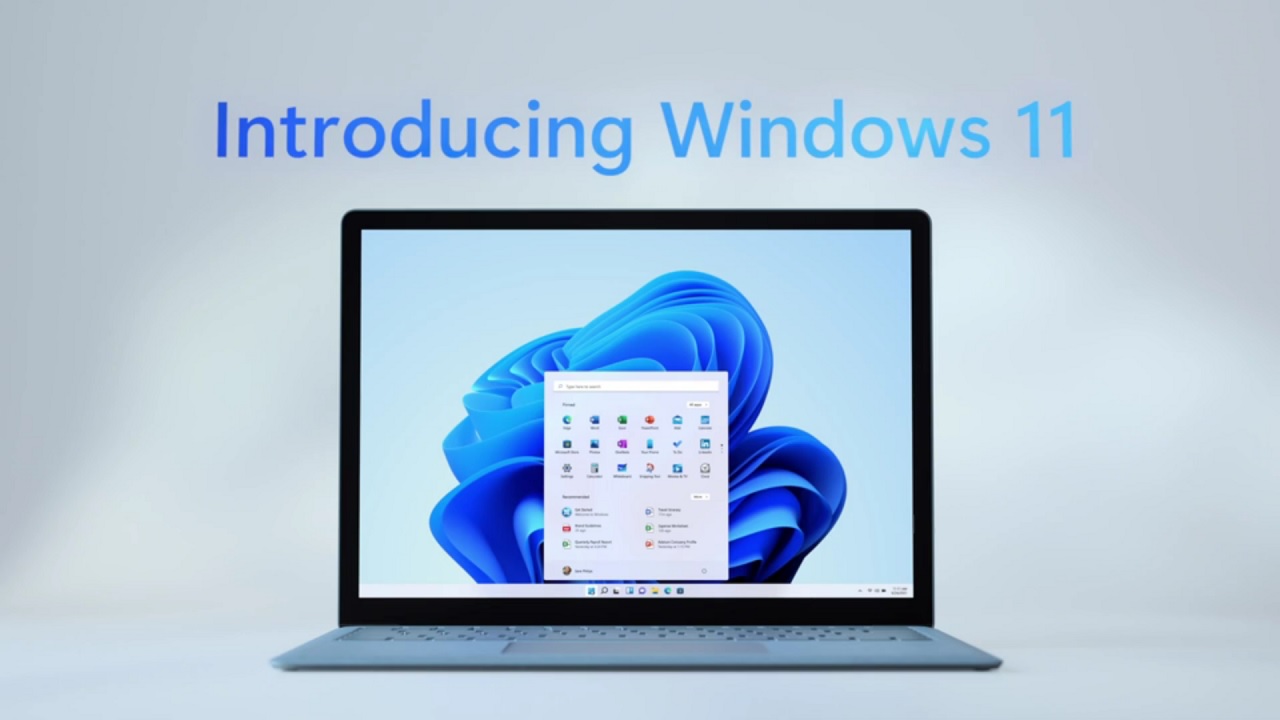
Microsoft officially announces Windows 11 today after a pretty sizeable leak on the new operating system earlier this week.
Windows 11 is reportedly coming as soon as next week to Windows Insiders, via the first publicly available test build.
Microsoft also confirmed that just like Windows 10, Windows 11 will be a free upgrade to existing Windows 10 users, provided you meet the new minimum hardware requirements for Windows 11, which are: a 64-but CPU, 4GB of RAM, and at least 64GB of storage.
Windows 11 includes a new Start menu and an updated Start button that are both centered on your taskbar. This is styled like the now-cancelled Windows 10X, a project Microsoft originally planned for dual-screen devices. The new Start menu won’t have Live Tiles like Windows 8-10, instead it will have a launcher seen in things like Chrome OS or Android.
Other cosmetic changes include rounded corners on windows as seen in Android and iOS, and overall the centered appearance for everything is also influenced by Chrome OS and MacOS. Windows 11 will also update its light and dark modes, supposedly with refinements over their Windows 10 counterparts.
Microsoft is updating and replacing Windows Snap with something called snap layouts, which lets you snap apps into the multiple modes that Windows 11 offers. Snap layouts will even remember where your apps were snapped to and stored, via something called snap group layouts. This will naturally come in handy for power users with multiple monitors.
Windows updates will reportedly be 40% smaller in Windows 11, and they’ll be more efficient as they’ll run in the background while you work. Speed and performance improvements are coming as well, as DirectStorage will be in Windows 11 (a big feature of Xbox Series X|S). This will require NVMe drives and drivers (and support in games), but will vastly improve load times in games.
Microsoft Teams and Xbox Game Pass are both getting integrated into Windows 11, with Teams being integrated right into the taskbar. Xbox Game Pass will be integrated directly into the Xbox app and with xCloud support, so you’ll be able to stream games from Xbox to your Windows PC.
Further, as Microsoft has been pushing Xbox more lately some features from the Xbox Series X|S will be coming to Windows 11 too, including auto HDR. This will let game developers add high dynamic range (HDR) to countless DirectX 11 and DirectX 12 games, so long as your display supports HDR.
Touch gestures and Windows Widgets are also a big change in Windows 11 – widgets provide a personalized AI-powered feed and will be accessible from the left-hand side of your screen. Built-in widgets naturally include news, weather, and maps. Widgets will also let you tip local creators from within Windows 11. Gestures have been improved for Windows tablets.
Lastly, Microsoft also focused on improvements with tactile pens and voice typing in Windows 11. Select pens will support haptic feedback, which opens the door for lots of new hardware in new Windows 11 tablets and devices.
This is Niche Gamer Tech. In this column, we regularly cover tech and things related to the tech industry. Please leave feedback and let us know if there’s tech or a story you want us to cover!